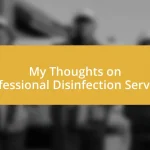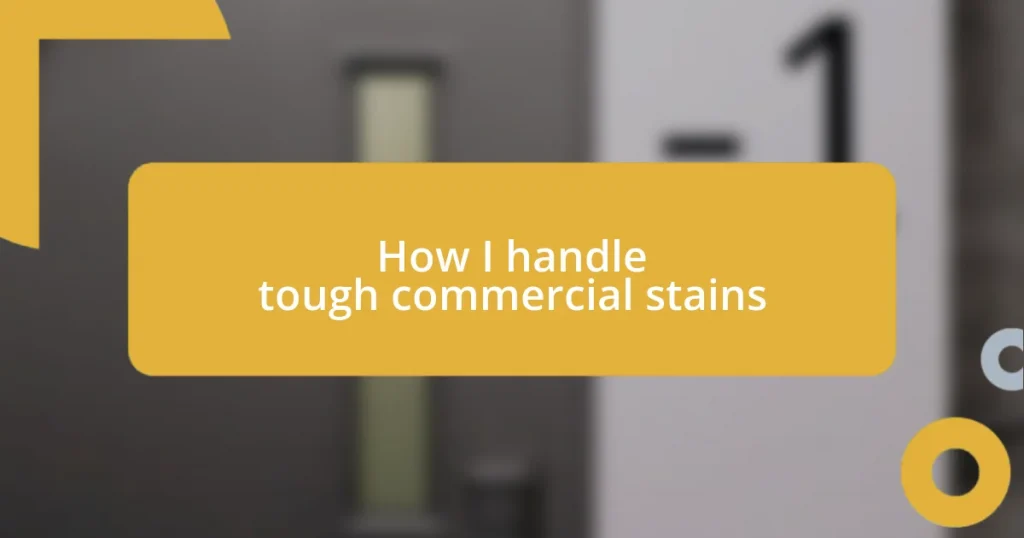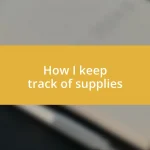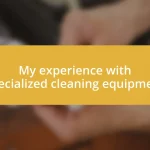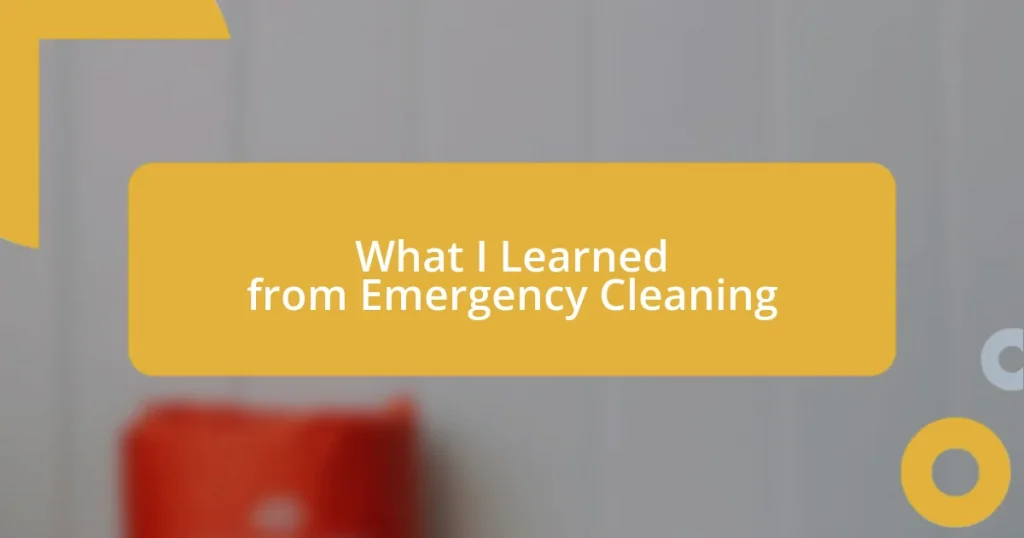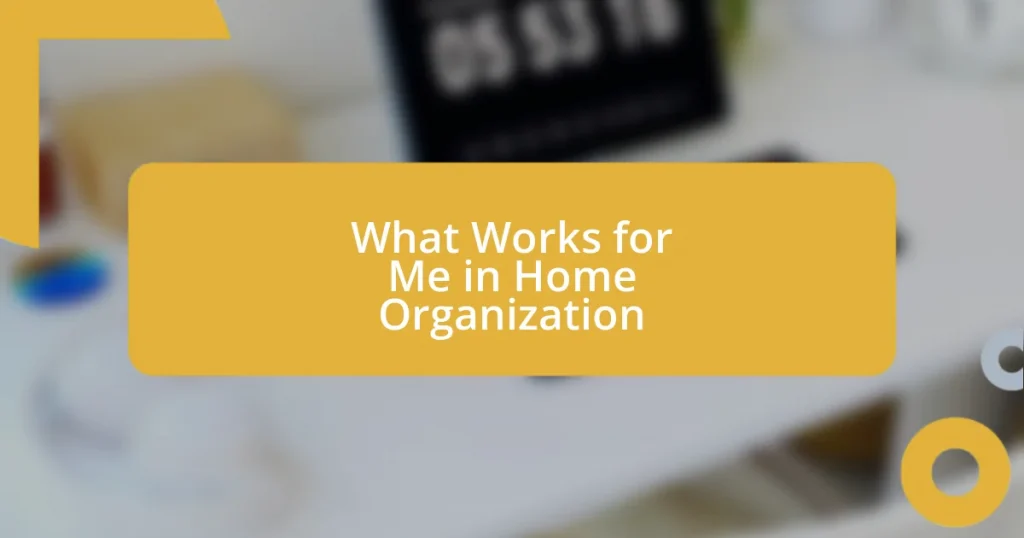Key takeaways:
- Understanding stain origins and material interactions is crucial for effective stain removal strategies.
- Having the right tools and techniques, such as blotting and applying heat, can significantly enhance stain removal success.
- Implementing preventative measures, like using stain-resistant materials and educating staff, can help reduce future stain occurrences.
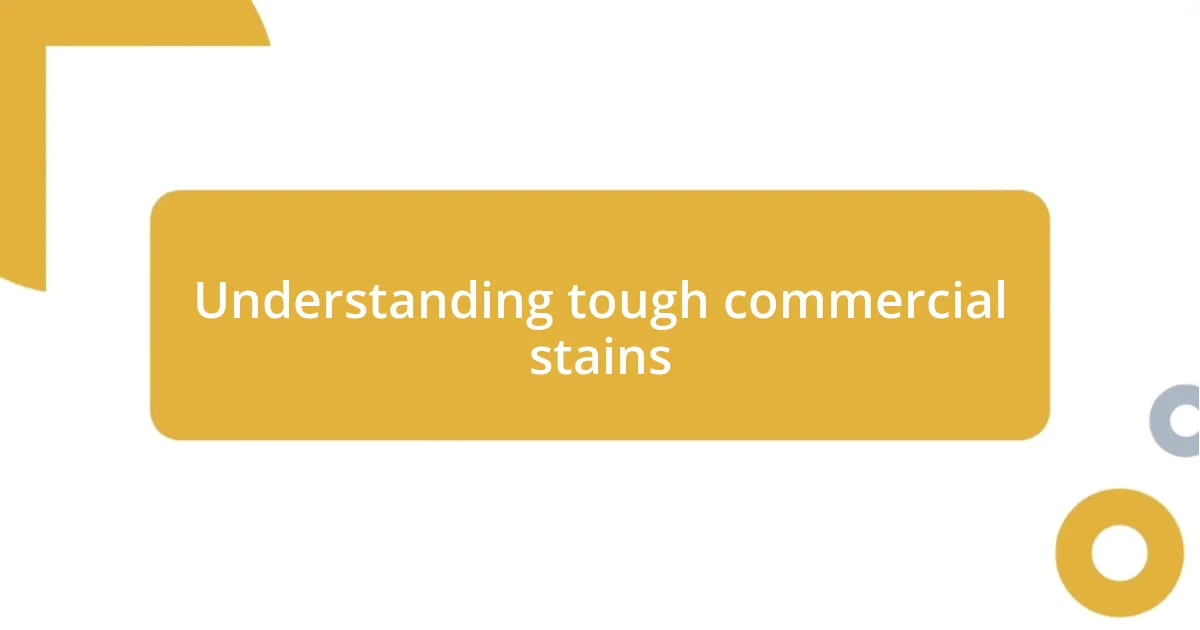
Understanding tough commercial stains
Tough commercial stains can feel like a daunting challenge. I remember the first time I faced a grease stain in a busy restaurant kitchen. It was as if the stain mocked my cleaning skills, a stubborn reminder that some messes require a deeper understanding of their origins. Isn’t it fascinating how a simple splatter can evolve into a layered dilemma?
When considering tough stains, it’s important to note that not all stains are created equal. For example, I once encountered a coffee stain that had set overnight, forming a bond with the carpet fibers. It made me realize that urgency matters; some stains demand immediate action to prevent permanent damage, while others can wait for a strategic approach. Have you ever felt that pang of dread seeing a stain that just won’t budge?
With every tough stain, I’ve learned to consider the material and the nature of the stain itself. For instance, a wine spill on a fabric is different from the same spill on tile. Understanding the relationship between the stain and the surface is crucial. Have you thought about how each stain tells its own story? Each challenge offers an opportunity to refine your technique and expand your knowledge in stain removal.
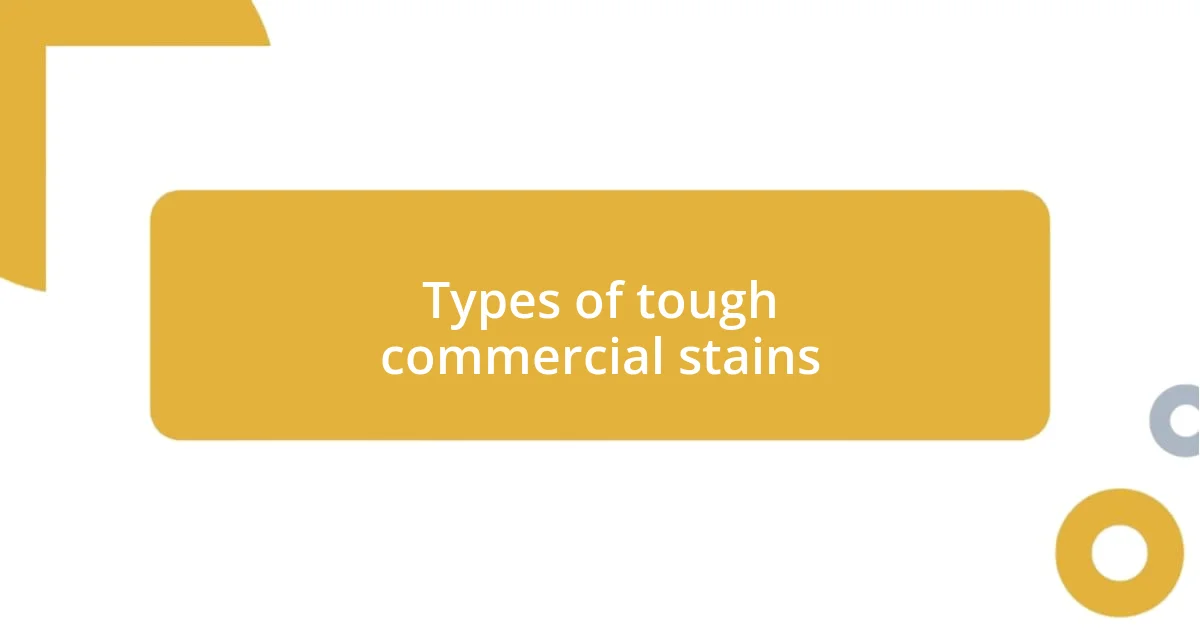
Types of tough commercial stains
When it comes to tough commercial stains, I’ve faced a spectrum of issues that can be quite overwhelming. For instance, ink stains from markers or pens can be particularly problematic in environments like offices or schools. I recall a frantic day when I had to deal with a vibrant blue ink spill on a light carpet. It felt like a race against time, especially since I knew how a small mistake could lead to a larger problem if not handled correctly.
Grease stains, especially from cooking oils, stand out as one of the most persistent offenders. I once had to tackle a greasy smear on an industrial-grade kitchen floor after a busy service. The sheer tenacity of the grease meant I needed a whole different approach and specialized degreasers. It was a lesson in resilience; sometimes, the simplest stains require the most rigorous cleaning techniques.
Then there are those stubborn rust stains that haunt metal surfaces, often cropping up in kitchens and bathrooms. I remember a particularly disheartening rust stain in a restaurant’s sink that seemed to resist every form of cleaning I tried. After experimenting with various methods, I discovered the power of commercial rust removers combined with some elbow grease. This experience taught me that tackling difficult stains is not just about the products used; it’s about the technique as well.
| Type of Stain | Common Locations |
|---|---|
| Ink Stains | Offices, Schools |
| Grease Stains | Kitchen Floors |
| Rust Stains | Sinks, Bathrooms |

Tools needed for stain removal
When it comes to tackling tough commercial stains, having the right tools can make all the difference. I once walked into a conference room post-meeting, only to be greeted by a mashed-up blueberry on the carpet. Armed with the correct tools, I felt like I could conquer anything. The process became not just a chore, but a chance to showcase my skills. Each item in my toolkit had a specific purpose, allowing me to customize my approach to every unique stain.
Here’s a list of essential tools I rely on for effective stain removal:
- Stain Remover: Look for a commercial-grade solution that targets specific types of stains effectively.
- Blotting Cloths: Microfiber cloths are perfect for absorbing spills without spreading them further.
- Scrub Brush: A stiff-bristled brush is invaluable for tackling tough, ground-in stains.
- Plastic Scraper: This helps lift residues without damaging the surface underneath.
- Protective Gloves: Keeping your hands safe is crucial when working with strong cleaning agents.
Having these tools on hand not only equips me for the task, but also instills a sense of confidence. One day, while dealing with a stubborn red wine stain on a hotel carpet, I was reminded of how important preparation is. Just like in those intense moments of cleaning, knowing that I can rely on these trusted tools makes the challenge feel less daunting.

Effective stain removal techniques
When it comes to effective stain removal techniques, one method that I’ve found particularly successful is the blotting technique. I remember a stressful afternoon when I spilled ketchup on a client’s white tablecloth during an event. Instead of rubbing the stain, which could have worsened the situation, I gently blotted it with a clean cloth. This technique allowed for maximum absorption of the stain, combined with a bit of cold water, making a world of difference in the outcome. It taught me the value of patience and precision in tackling stains.
Another technique I swear by is the use of heat to combat set-in stains. There was a time I dealt with an oil stain on a uniform that had already been through the wash. I was at a loss until I recalled reading about applying heat to break down oil particles. Using a warm iron with a cloth over the stain, I was astonished to see the oil lift right out. This experience showed me how sometimes, innovative thinking paired with a little warmth can lead to remarkable results.
Lastly, experimenting with natural remedies has served me well. I’ve often reached for baking soda and vinegar to tackle those tough stains that just won’t budge. There was a memorable incident with a coffee stain on a carpet—something I thought was impossible to remedy. However, after applying a paste of baking soda and water, letting it sit, and then following up with vinegar, I experienced the delightful moment of seeing the stain vanish. This reminded me that nature often provides us with effective solutions—worth considering before diving into harsher chemicals.
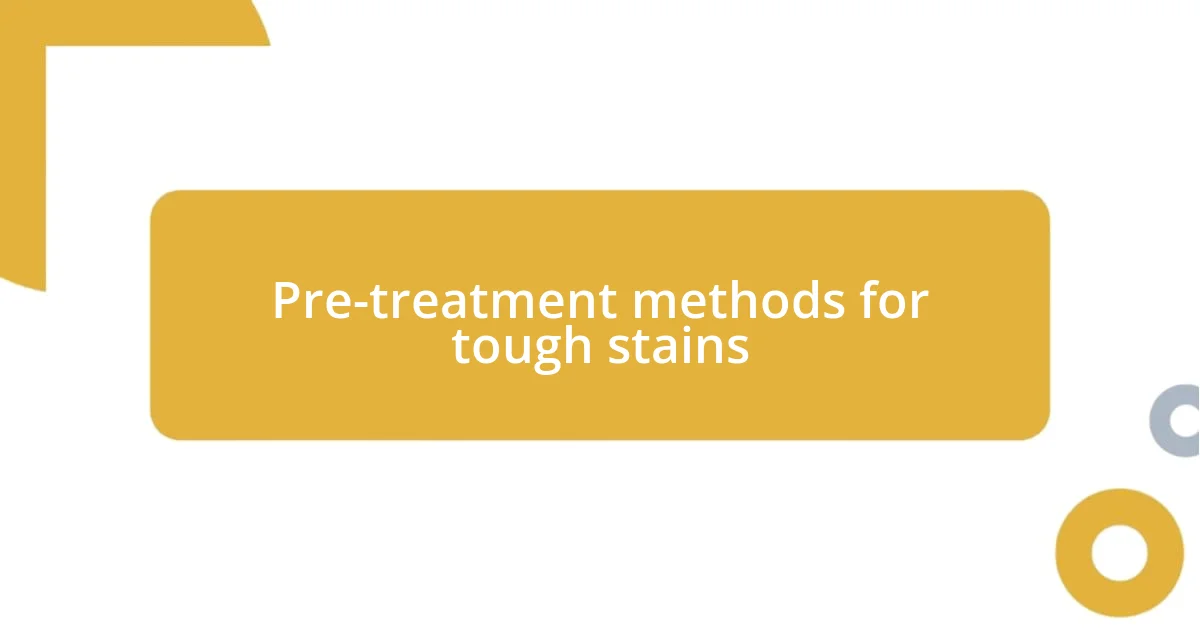
Pre-treatment methods for tough stains
When pre-treating tough stains, I often start with the simplest yet underrated method: rinsing. I remember a chaotic day when a client accidentally knocked over a cup of vibrant ink on their shirt. With quick thinking, I rushed to run cold water through the fabric, allowing the stain to lift before it could set. This fast action not only saved the shirt but also relieved my worries about a missed deadline. Rinsing can work wonders if you act quickly enough—have you ever thought about how crucial those first moments can be?
Another pre-treatment method I find essential is applying stain remover directly to the affected area. I recall a particularly challenging grease stain on a restaurant tablecloth that had survived multiple washes. After carefully applying the stain remover and allowing it to sit for about 15 minutes, I tackled it again with a scrub brush. Seeing the stain begin to dissolve felt like winning a small battle—it’s an exhilarating feeling! Have you ever felt that rush when you know you’re making progress against a stubborn stain?
Lastly, I’ve learned the importance of testing any solution on an inconspicuous area first. During a high-pressure event, I once came across an unfamiliar fabric that had a mysterious mark. Instead of diving in headfirst, I dabbed a bit of my cleaning solution on an edge of the fabric. It seemed simple, but that small precaution kept me from creating a whole new problem. Isn’t it reassuring to know that taking a moment to test can save you from a disaster?

Commercial products for stain removal
When it comes to commercial products for stain removal, I often rely on specific brands that have proven their effectiveness over time. For instance, one of my go-to products is a heavy-duty enzyme cleaner. I remember a particularly tough day when a large ketchup stain marred a rented carpet for an event. After applying the enzyme cleaner and allowing it to sit, I watched in amazement as the stain seemed to dissolve away. It felt like watching a magic trick unfold, reminding me how crucial it is to have reliable products in my toolkit.
Another commercial option I can’t overlook is oxygen bleach. I recall a frantic moment where a client’s white tablecloth was marred by red wine after a mishap. In my desperation, I mixed oxygen bleach with warm water and soaked the fabric for a couple of hours. The transformation was astonishing—the tablecloth emerged looking as good as new! Have you ever had that heart-racing moment where a cleaning product saves the day? It really is worth the investment in quality stain removers.
I also find that pre-mixed stain removers are great for quick cleanup jobs. Just the other day, while helping a friend with her small café, a colorful fruit smoothie ended up splattered on her white apron. I simply reached for a commercial stain remover spray, sprayed the area, and let it sit for a few minutes. The ease and efficiency of that product brought a wave of relief, proving that sometimes, simplicity paired with the right product can make all the difference. Have you ever considered how a little spray could turn a cleaning crisis into a quick fix?
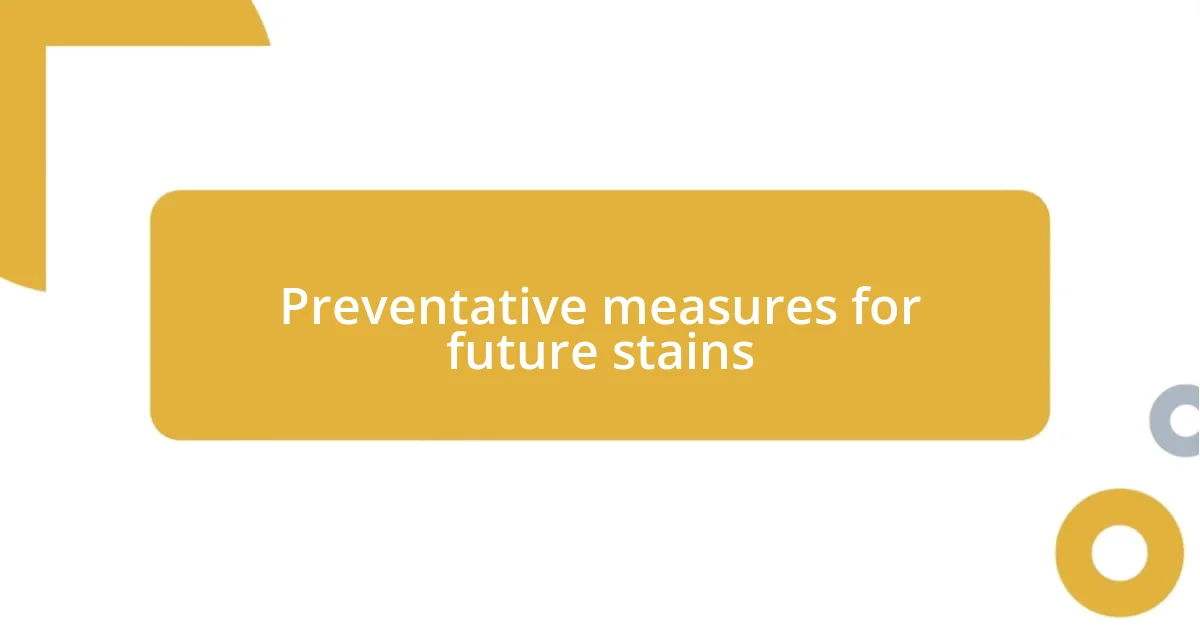
Preventative measures for future stains
Implementing preventative measures can greatly reduce the chances of tough stains becoming a headache. For instance, I once advised a local restaurant owner to use tablecloths that are both stain-resistant and easy to clean. The owner was skeptical, but after a week of service, he couldn’t believe how much easier it was to maintain the appearance of his tables. Have you ever found that simply changing materials can transform how you approach cleaning challenges?
Another effective strategy I’ve discovered is educating staff and clients on handling spills immediately. After a chaotic event where drinks seemed to fly everywhere, I held a brief training session for the staff. I shared quick tips, like blotting instead of rubbing, and it was remarkable to see how much more prepared they felt afterward. How often do we underestimate the power of knowledge in preventing stains before they set in?
Lastly, using protective coatings on carpets and upholstery can be a game changer. I implemented this at a venue that hosted many events. The first time I saw a red wine mishap handled smoothly, thanks to the protective coating, I was overjoyed. It not only saved time but also the venue’s reputation. Have you ever witnessed the relief that comes from knowing you’ve taken proactive steps to safeguard your investments?








